You are here
Turkmenistan.
Turkmenistan is a country in Central Asia.
"They love their homeland not because it is great, but because they own it"
Seneca Lucius Anney.
Turkmenistan on world map.
Turkmenistan, located in the southwest of Central Asia, is washed by the Caspian Sea in the west. The length from west to east is 1,100 kilometers, from south to north - 650 kilometers. It borders on Kazakhstan in the north, Uzbekistan in the north-east, Afghanistan in the south-south-east, and Iran in the south.
Territory - 491.2 thousand square kilometers including the area of the desert - 375 thousand square kilometers. Population - 5,851,000 people (2018). The capital is Ashgabat (730,000 inhabitants). There are 21 cities in the country, the largest are Turkmenbashi (formerly Krasnovodsk), Turkmenabat (former Chardzhou), Dashoguz (former Tashauz), Balkanabat (former Nebitdag). 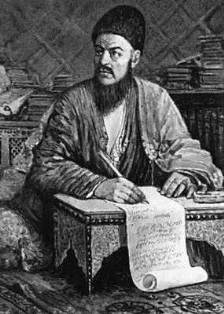
The coastline of the Caspian Sea in the south is weakly indented, and in the north it has winding outlines, forming the Kara-Bogaz-Gol, Turkmenbashi, Turkmensky, Krasnovodsky, Cheleken, Darja peninsulas.
Ogurchinsky Island is located off the coast. In the south - the Kopetdag mountains (up to 2942 meters above sea level - Mount Rize) and the northern foothills of Paropamiz - the Batkhyz heights (up to 1000 meters above sea level) and Karabil (up to 980 meters above sea level).
In the extreme southeast stretches the spur of the Gissar ridge - Kugitangtau (up to 3139 meters above sea level). To the northwest of the Kopetdag there are two separate ridges - Small Balkhan (up to 777 meters above sea level) and Big Balkhan (up to 1880 meters above sea level).
In the west - the Krasnovodsk plateau with steep cliffs Kureningkuresi (up to 306 meters above sea level). In the northwest, the spurs of Ustyurt enter - the Kaplankyr, Chelyunkyr, Kostmatdag plateau. The Kopetdag Mountains are bordered by a foothill plain, in the west merging with the Caspian lowland.
To the north and north-east of the foothills of the plain stretches the sandy desert of the Karakum, occupying the low-lying Turkmen plain. In the north and north-east it is limited by the Sarykamysh depression and the Amu Darya valley, in the west - by the dry channel of the Western Uzboy.
The borders of Turkmenistan include a narrow strip of the right bank of the Amu Darya - the western part of the Kyzyl Kum desert and the Sundukli sands. The climate is sharply continental and dry. The average temperature in January is 4 ° С (in the Atrek valley + 4 ° С), in July - + 28 ° С.
Precipitation ranges from 80 mm in the north-east to 300 mm and more in the mountains. Constant winds, frequent dust storms. Main rivers: Amu Darya (on the territory of Turkmenistan more than 1000 kilometers, not a single tributary flows into it; a significant part of the water flows into the Karakum Canal - now the Karakumrek,
Atrek (the only river flowing into the Caspian Sea), Tejen, Murghab. The soils are predominantly gray-brown and sierozem. The vegetation is mostly desert, in the mountains there is vertical zonation. There are 8 reserves in Turkmenistan, among them: Badkhyz, Repetek (biosphere since the late 1970s), Khazar (former Krasnovodsk), Kopetdag and others.
Turkmenistan is rich in various minerals: oil (according to government estimates, the Turkmen part of the Caspian Sea contains 3 billion tons of oil, according to other sources, the forecasted oil reserves are 12 billion tons); gas (reserves of gas fields are estimated at 26 trillion cubic meters); sulfur, potash and rock salts; non-ferrous and rare earth metals.
Mirabilite is mined (Kara-Bogaz-Gol). Rich resources of solar and wind energy. The first state arose on the territory of modern Turkmenistan in 250 BC. e. It was Parthia with its capital in the city of Nisa (18 kilometers from Ashgabat). 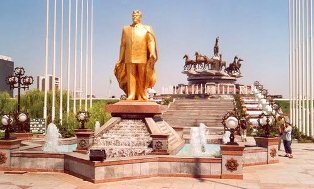
During its heyday, the Parthians spread their influence over vast areas from Mesopotamia to India. After the fall of Parthia in the 3rd century, these lands became part of Khorasan of the possessions of the Iranian Sassanid dynasty, whose empire was absorbed in the 7th century. Arab Caliphate.
The Turkmen people formed by the 11th century, due to the migration of the Oguz tribes (Seljuk) and their mixing with the local Iranians. The Seljuks created a vast state, the center of which was the territory of Turkmenistan. In the XII century it was conquered by the Khorezmshahs, in the XIII century by the Mongols, in the XIV Tamerlane.
Until the XVIth century, it was part of the Uzbek empire of the Timurids, then the Khiva and Bukhara khanates. In 1869, Russian troops settled on the eastern coast of the Caspian Sea, establishing a fort Krasnovodsk (present-day town of Turkmenbashi).
It became the center of the Transcaspian region. In 1881, the territory was finally conquered, and Askhabad (from 1927 the city of Ashgabat) was built as a stronghold, which became the capital. In 1886 the region became part of the Turkestan Territory.
During this period, the Central Asian railway was laid in Turkmenistan, the development of oil resources began, although the basis of the economy was cotton and cattle breeding. The revolutionary events of 1917 in Turkestan developed almost simultaneously with the center.
In November-December 1917, Soviet power was established. On April 30, 1918, at the V Congress of Soviets of the Turkestan Territory, the Turkestan ASSR was formed as part of the RSFSR. On October 27, 1924, the Turkmen SSR was formed from separate territories inhabited by the Turkmens.
On August 22, 1990, the Supreme Soviet of the Turkmen SSR adopted the Declaration on the State Sovereignty of the Republic. On October 26, 1991, during a national referendum, 94% of voters voted for the republic's state independence.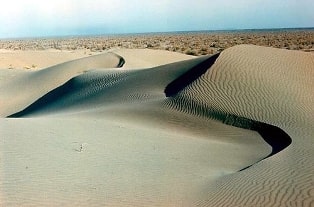
Since November 1991, the official name of the state is Turkmenistan. According to the 1992 Constitution, Turkmenistan consists of the following administrative-territorial entities: velayats (regions) - there are five of them: Akhal, Balkan, Dashkhovuz, Lebab, Mary; etraps (districts), shahrs, equated to etraps in which government bodies are formed, as well as shahrs, settlements and both, where local self-government bodies are established.
Turkmen make up 72% of the population, there are also Russians, Uzbeks, Kazakhs, Tatars, Ukrainians, Azerbaijanis, Armenians and Baluchis. The official language is Turkmen (Oguz group of the Turkic language family), graphics are Latin.
Religion: Sunni Islam is widespread. The monetary unit is manat. Has diplomatic relations with the Russian Federation (established on April 8, 1992). Part of the CIS. National holiday - October 27 - Independence Day of Turkmenistan.
On May 18, 1992, the Supreme Soviet adopted a new Constitution. She proclaims Turkmenistan a democratic, legal and secular state. Presidential republic. The head of state and executive power - the president, is elected through direct general elections for a term of 5 years.
He is also the supreme commander of the country's armed forces. On October 27, 1990, Saparmurat Niyazov was elected the first president of the republic. On June 21, 1992, after the adoption of the Constitution, extraordinary presidential elections were held. S. Niyazov was re-elected President.
The highest representative body is the Khalk Maslakhaty (People's Council) of Turkmenistan. It includes: the president, deputies of the Mejlis, the chairman of the Supreme Court, the chairman of the Supreme Economic Court, the prosecutor general, members of the Cabinet of Ministers, heads of administrations.
Khalk Maslakhaty considers and makes decisions on the feasibility of amending the Constitution, holding referendums, working out the main directions for the country's development, ratifying and denouncing treaties on interstate unions and other formations and on other issues.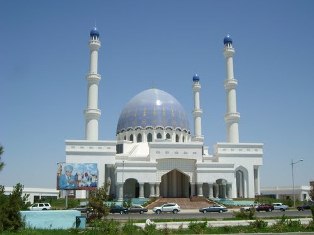
The legislative body, the Majlis (parliament), consists of 50 deputies, elected in territorial constituencies with an approximately equal number of voters for a term of 5 years. Currently, the Democratic Party of Turkmenistan (DPT) is officially registered in Turkmenistan.
Chairman of the Political Council of the DPT - S. Niyazov. Permanent neutrality has been proclaimed as a fundamental principle of foreign policy. In December 1995, at the 50th session of the UN General Assembly, a resolution was adopted recognizing the status of permanent neutrality of Turkmenistan.
The republic is a member of the UN since March 2, 1992, as well as a member of the ECO, OIC, OSCE, Non-Aligned Movement, ADB, ESCAP, EBRD, IDB and other international organizations. The country's economic development strategy for the transition period is determined by the “10 years of stability” program.
Its main goals and objectives are the transformation of Turkmenistan into a state with a developed socially oriented market economy, ensuring real economic independence (primarily food independence). In the total volume of production, the products of the fuel and energy industry make up 27.5%, machine-building - 5.1, chemical - 5.4, light industry - 41%.
The most promising industry is the fuel and energy complex. Light industry (mainly cotton ginning) also belongs to the leading industries. The oil industry is associated with the Nebit-Dag oil fields, where it was produced over 800 years ago. Later, the Kundag, Dagadzhik and Aligul fields were discovered in West Cheleken, Koturdepe, Barsa-Gelmes, Okarem and Kamyshlydzha. After gaining independence, exploration of the Caspian shelf began with the involvement of foreign companies.
The oil industry has made it possible to create an oil refining industry. In 1943, the equipment of the Tuapse oil refinery was evacuated to Krasnovodsk (now Turkmenbashy). The Krasnovodsk Refinery was created on its basis.
At the end of 1990, its reconstruction began. It has installed a millisecond catalytic cracking unit designed to process 1.8 million tons of oil, and a gasoline production unit with a capacity of 900,000 tons of high-quality fuel associated with it by a single technological scheme.
A hydrotreating and catalytic reforming unit with a capacity of 750,000 tons of gasoline per year was commissioned. The gas industry began to develop in the mid-1960s. The country's balance includes 127 gas fields, the largest of which are Dovletabat-Donmez with reserves of 1.3 trillion cubic meters and Yashlar with reserves of 0.76 trillion cubic meters.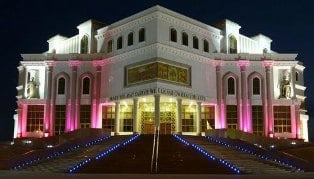
The gas pipelines Central Asia - Central Russia, Central Asia - Ural originate here. Since the country's independence, the first export gas pipeline Korpeje-Kut-Kui (Iran) was opened. It is considered as the first stage in the construction of the Turkmenistan-Iran-Turkey-Europe super gas pipeline.
In addition, the issue of laying the Trans-Afghan gas pipeline from the largest gas field in Turkmenistan through Afghanistan to Pakistan is not removed from the agenda. The issue of gas transportation to China and Japan is also being discussed.
The country has capacities for the production of oil equipment, centrifugal pumps, chemical equipment, etc. The chemical industry produces such goods as carbon black, sulfur, iodine, bromine, mineral fertilizers, chemical plant protection products, household chemicals. The light industry is developing steadily.
Among its branches are cotton ginning, primary processing of wool, silk cocoons, textile, knitted, carpet weaving. During the years of independence, 7 factories for the production of cotton yarn, a factory for the production of denim, and a large enterprise for the production of knitwear were built.
The food industry is represented by oil-processing (vegetable oil production), meat, fruit-canning, tobacco, wine-making industries. Agricultural land - 82% of the total land (mainly pastures; arable land - 3%). The main type of agriculture is irrigated.
Favorable soil and climatic conditions make it possible to grow the most valuable varieties of fine-fiber cotton under irrigation. The country produces about 1.3 million tons of raw cotton. About 40,000 kilometers of collector and drainage network and other facilities have been built.
The period of independence was characterized by a sharp increase in grain production due to a partial reduction of land under cotton, which allowed Turkmenistan to become self-sufficient in grain. Vegetable growing, horticulture (apples, figs, pomegranates, apricots, plums, etc.), viticulture (making raisins, raisins, wine), melon growing (melons, the range of which includes more than 200 species, watermelons) are widely developed.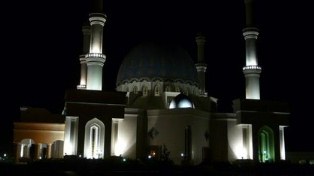
In the south-west of the country, in the subtropics, persimmon and ziziphus (Chinese date) grow. In semi-desert and desert regions, nomadic livestock raising. The leading branch of animal husbandry is sheep breeding, including karakul.
Turkmenistan produces significant volumes of natural silk, wool, licorice. A typical desert industry is also developed - camel breeding. Beekeeping takes place in the foothill and mountainous regions. The famous Akhal-Teke and Iomud breeds of horses have long been bred in the country.
Fishing is associated not only with the Caspian Sea, but also with rivers and canals. Far Eastern commercial fish such as grass carp, silver carp and white Amur bream have been successfully acclimatized in the Amu Darya - Murgab - Tejen river system.
With their help, the problem of cleaning canals and reservoirs from overgrowth is also solved. The developed transport system includes rail, river, sea, road and air transport. Road transport is of particular importance in the transportation of goods.
The length of public roads is 15,000 kilometers. Almost all cities in the country are connected by highways. The formation of the railway network began at the end of the XIXth century, when the Trans-Caspian railway was built, connecting Krasnovodsk with Tashkent. Today, the length of the railways is 2350 kilometers. 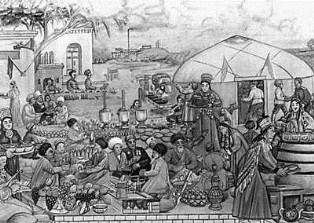
In the future, the national railways are planned to be connected with the roads of Turkey, Iran, Uzbekistan, Kyrgyzstan, Kazakhstan and China into a single transport highway; it, in turn, will form part of the transcontinental railway line from the Chinese port of Lianyuncheng through Urumqi - Alma-Ata - Tashkent - Tehran - Istanbul - Budapest to Rotterdam.
One of the sections of this road Mashhad (Iran) - Tejen (Turkmenistan), with a length of 800 kilometers, has already been built, of which 132 kilometers are across Turkmenistan. Navigation along the Amu Darya River, Karakum River (the head of the channel is navigable for 800 kilometers), the Caspian Sea.
Non-freezing sea port of Turkmenbashi. The ferry terminal is also undergoing a complete modernization. It is planned to open a ferry service between the ports of Turkmenbashi and Olya, Astrakhan region. Since 1998 the port has been reconstructed, practically the first since its foundation more than 100 years ago.
The port covers an area of 400,000 square meters. The terminal is being equipped, new berths are being built. The sea railway ferry Turkmenbashi - Baku operates. There are a number of resorts in the republic: Bayram-Ali, Firyuza (climatic), Archman, Mollakara (balneological).
The CIS countries account for more than 51.6% of Turkmenistan's foreign trade turnover. The main export items (98.6%) remain natural gas and oil, oil products, phosphorites, cotton fiber, electricity, astrakhan fur, carpets, and dried fruits.
The main trading partners are Turkey, Iran, Pakistan, Italy, Switzerland, USA, Great Britain. Cotton is mainly supplied to these countries (over 80% of all exports).
Authority:
Encyclopedia of Turkmenistan.







